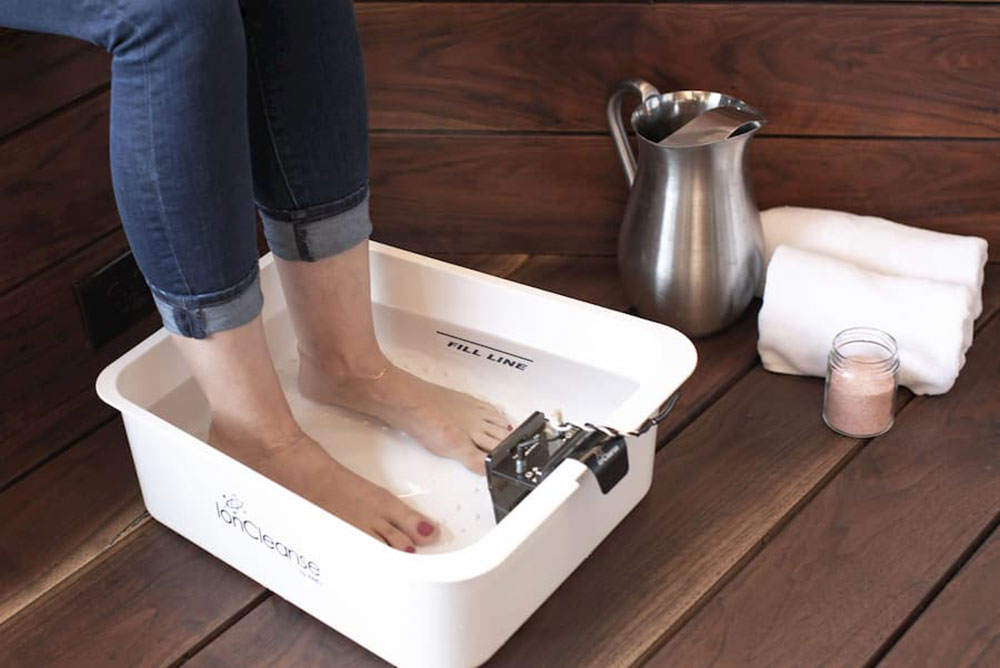
MAKING IT through this pandemic year has inspired medical spruce-ups for some: physical exams and visits to ophthalmologists, dermatologists, gynecologists. But others are choosing more extensive, sometimes holistic, health evaluations—which in the 2020s can include diagnoses like small intestinal bacterial overgrowth (SIBO) and increasingly popular treatments, such as the ionic foot bath.
Thirty-something M.L., who worked as a nurse-practitioner and recently cofounded a new marijuana business, consulted a Denver naturopath to deal with a host of health issues, such as headaches and fatigue, as well as neuropathy from Raynaud’s disease in her fingers, and eczema. But M.L.’s most pressing concern was GI issues that had plagued her for years, resulting in a diagnosis of SIBO, which appears lately to be “much more common than previously thought.”
Bacteria are beneficial as long as they stay in the large intestine, explains the Washington Post’s Cara Rosenbloom. In the case of SIBO, though, these bacteria “end up in the wrong part of the digestive system,” where their proliferation can cause abdominal pain, gas, bloating, constipation and diarrhea—all symptoms that afflicted M.L.
SIBO occurs in those taking proton pump inhibitor drugs like Prilosec to reduce stomach acid—reducing acid allows bacteria to flourish; and in those with diseases of the digestive system, such as irritable bowel syndrome, as well as in people with diabetes and coronary artery disease. It’s also a “common, often undiagnosed cause of malabsorption” in older adults.
The most accessible measure of SIBO is the lactulose breath test—performed after a two-day diet of white rice, eggs and a sugar solution—combined with other assessments. For M.L., the results showed her gut excessively colonized by yeast, which interfered with nutrient absorption—probably related to chronic stress and fatigue that she suspects have been background issues for her since high school.
But the more alarming health check for her was the ionic foot bath, which is enjoying a “surge in popularity.” After the water turned unusual dark colors, M.L. said, it “suddenly began tingling with parasites”—dozens of tiny worms that appeared to emerge from her feet, a not-infrequent experience for ionic foot bathers.
In fact, pinworm (Enterobius) is the most common infection in the U.S., causing restless sleep and anal itching but often symptom- free. The foot bath’s metallic array ionizes the water, giving the hydrogen a positive charge which then purports to work like a magnet to attract negatively charged toxins in the body, such as arsenic and aluminum.
In the most in-depth study by Canadian holistic researchers, the detox bath neither reduced toxins nor stimulated the body to do so, which is another health claim. In general, the body sweats out or excretes toxins like these. But anecdotal reports by foot bathers often mention pinworms; and other research has documented reduced levels of arsenic and aluminum in people following repeated foot bath use.
Holistic practitioners have also found that the specific colors and consistency of the bathing water, typically altered by metals in the array and impurities in the water, also vary with each individual’s health problems to indicate accumulated toxins in certain areas of the body. Among a long list of possible colors, yellow/green suggests urinary tract, bladder and kidney problems; and white, problems in the GI tract, headaches and insomnia.
Many people also have similar experiences with health effects of the baths, at first feeling lousy, often with swollen glands —indicators that the body is fighting infection. In addition to the footbaths, M.L began an anti-parasite diet called “GI synergy” that includes wormwood and berberine, a multi-herb supplement—which made her feel worse at first, as the worms died off.
Along with another very strict diet— no beans, no dairy, very little fruit—M.L.’s regimens focused on treating both the worms and the SIBO. In addition, “intensive psychotherapy” helped her understand that she had felt anxious “my whole life.” Slowly M.L. felt better, at first “in waves” with fewer headaches and less fatigue. And then “all of a sudden” one day, symptoms disappeared, and she felt “great! And hungry!”
Both pinworms and SIBO also have medical treatments: for SIBO, antibiotics such as rifaximin; and for pinworms, anti-parasitic drugs like pyrantel pamoate. But standard treatment for both conditions can also include or rely solely on diet—for SIBO, for example, no snacking between meals.
Ionic foot baths are widely available—at holistic health spas and alternative health practices. For at-home use, model costs range from $40 to $1,000. Comments on Amazon also range widely—from “Rip off!” and “Scam” to many variations on “This really works!”
Mary Carpenter
Mary Carpenter regularly reports on topical issues in health and medicine.

Mary- wow- 50% of Americans have pinworms? That seems very high! Should I be worried?
I find the idea of worms emerging from your feet incredibly disturbing. Mary, can this really happen?
Kathy, it’s a good question. Although I could find no medical studies on this, there are so many anecdotal reports online and from people I know, plus some 50% of Americans have pinworms (many without knowing it) and, maybe most important, my source has good medical training and has questioned each step of her recent health experiences. So I believe the answer is yes.